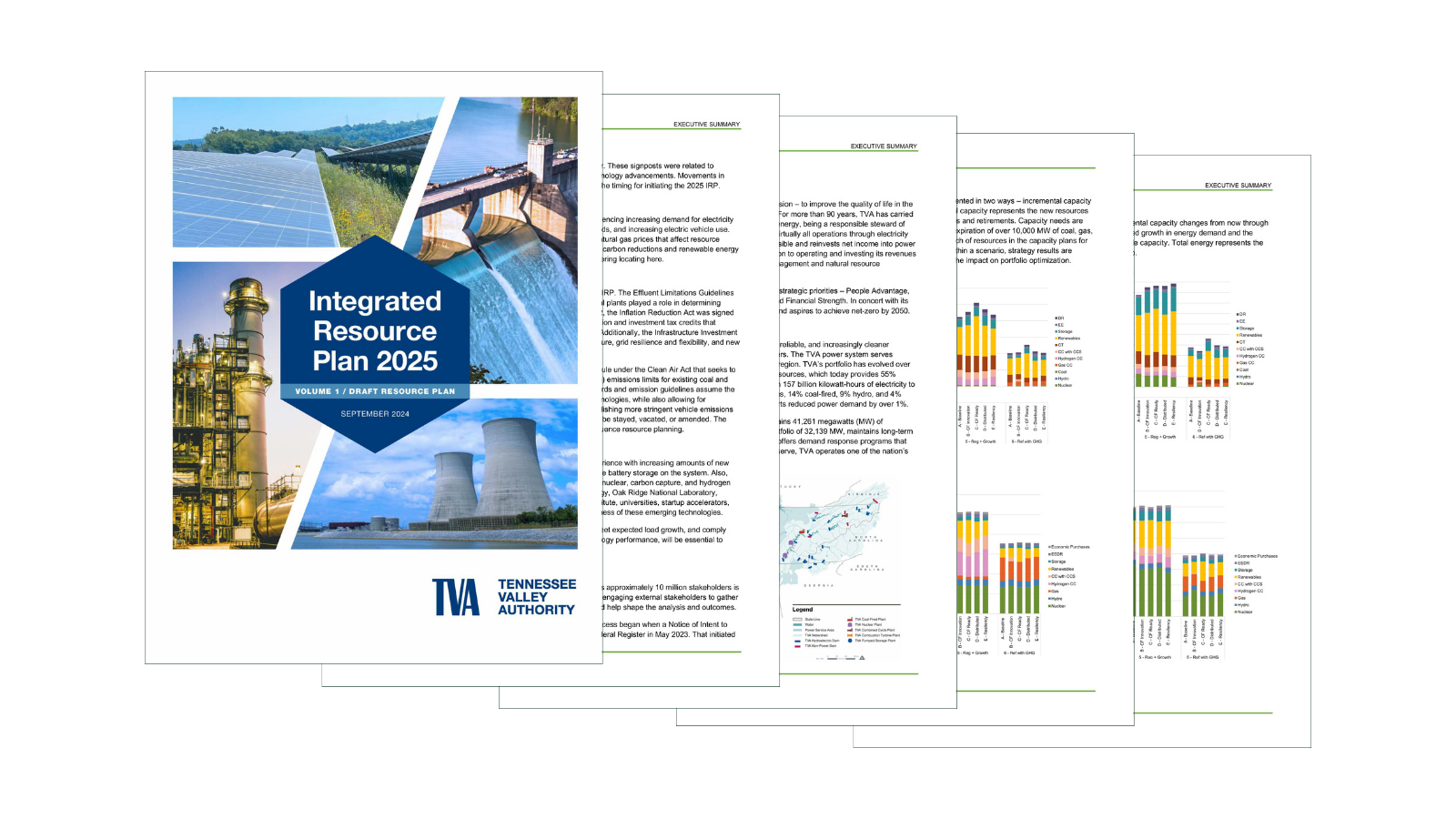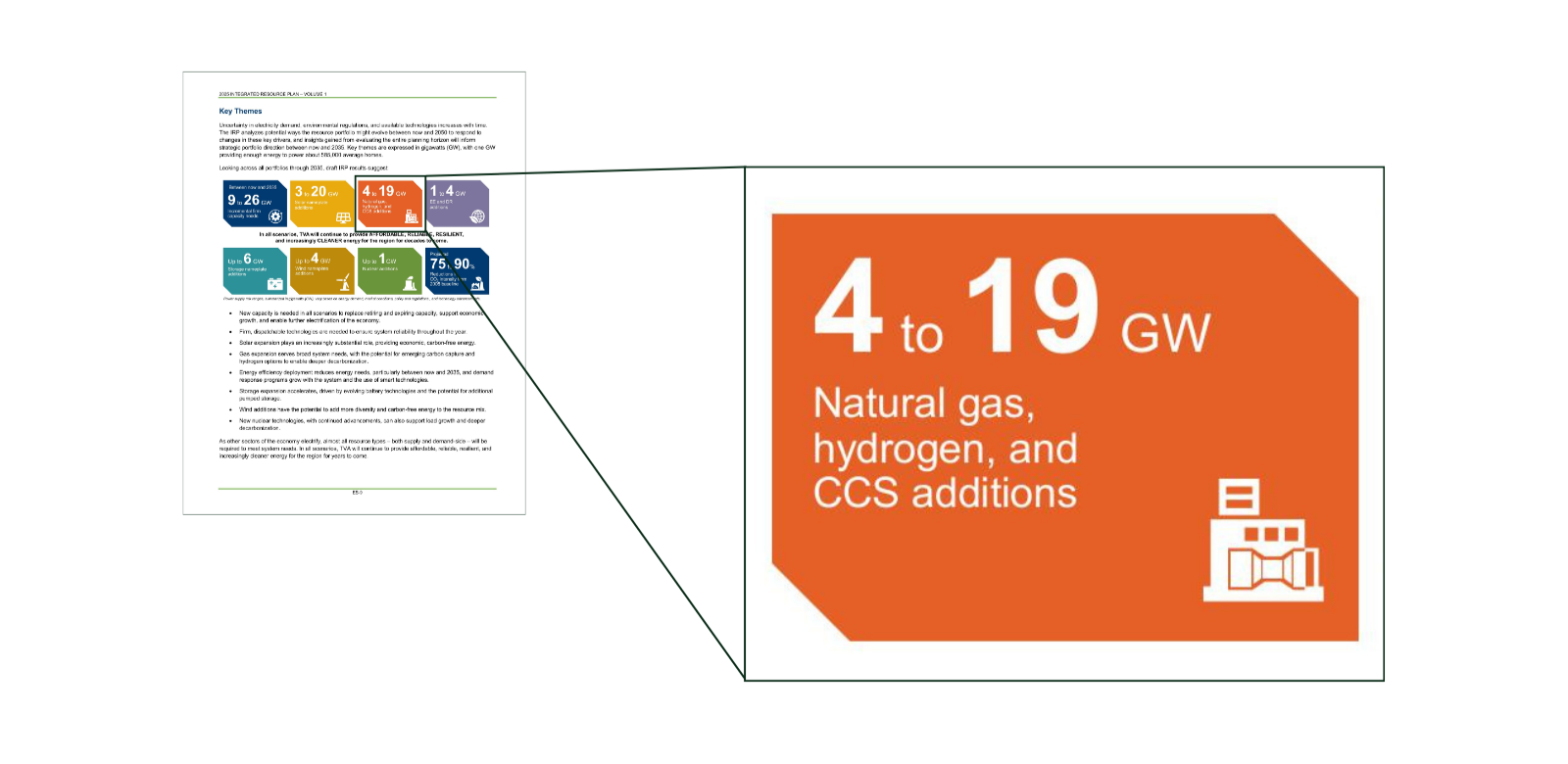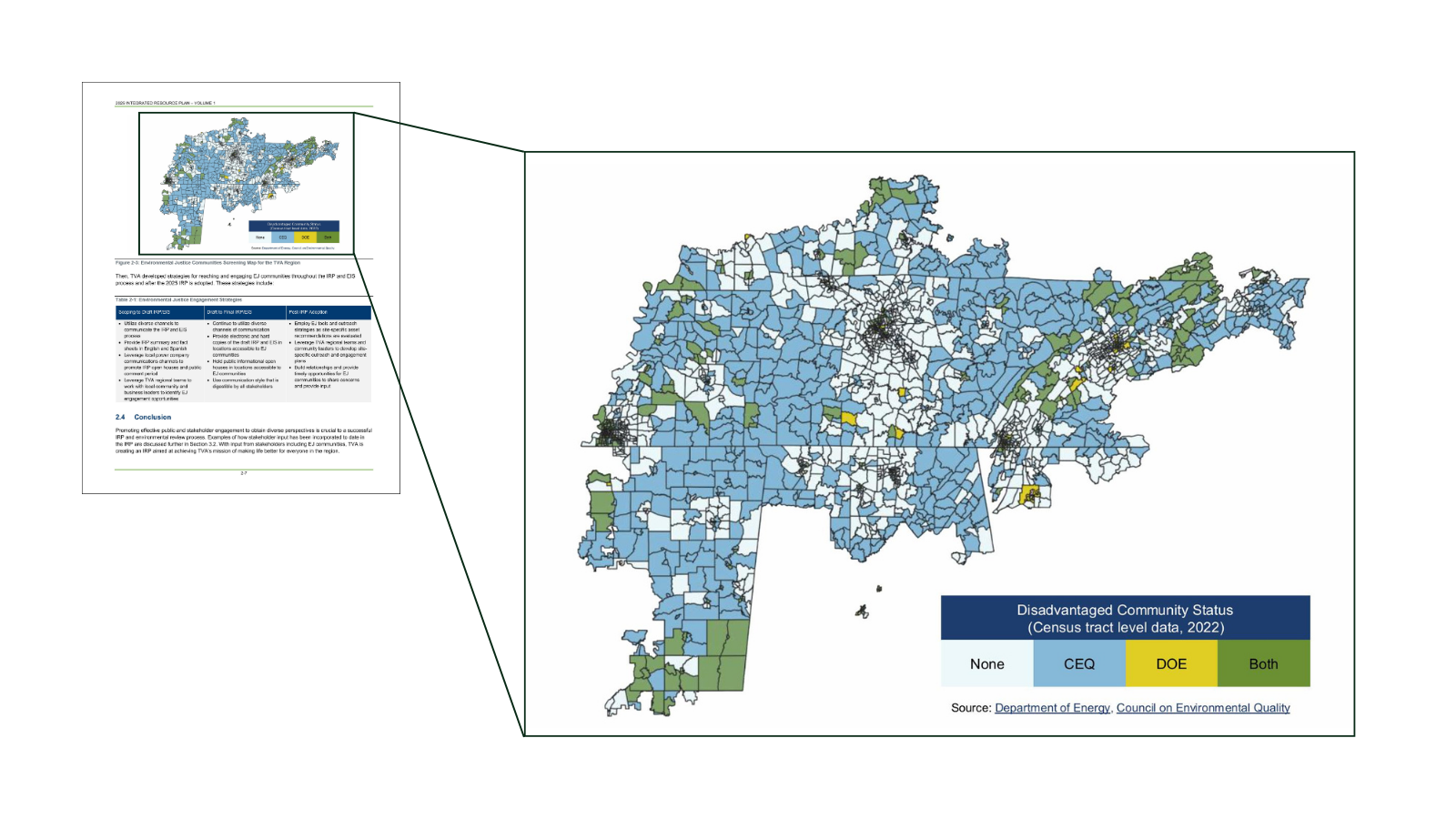Moreover, we know that gas has reliability issues, and TVA’s approach of addressing these concerns by simply adding more gas plants to the grid is not a viable or sound one. Increasing the number of gas plants will lead to less reliable, more expensive power for customers when TVA customers already face some of the highest energy burdens in the country.
Crucially and, perhaps unsurprisingly, TVA customers are opposed to the unsustainable direction TVA is heading in. At every turn in the proposal and environmental review processes, the public has spoken out against gas buildouts, through comments, statements, and public letters. Leaders and decision-makers, including the Environmental Protection Agency, National Parks Service, and National Electric Service, have also urged a transition to renewables over meeting growing demand and replacing retiring coal plants with equally dirty gas.
To add insult to injury, because TVA is ratepayer-funded, the power company’s new investments in gas infrastructure are and will continue to be funded through monthly energy bills—all paid by the very same people who oppose their construction in the first place.
TVA Can Still Make the Right Decision and Invest in Clean Energy
Despite these recent decisions, the door hasn’t yet closed on a better, healthier, and more climate-conscious future. The proposal TVA released is only a draft, so we can still defeat a bad plan.
Over the next few months, we can all push for a sustainable, forward-looking final plan that abandons the fossil-fuel foolishness of gas and, instead, invests more in renewables. Ultimately, after TVA releases the final plan next spring, the TVA board will vote on whether to approve or reject it. The board must reject a bad plan—and Congress and the President should fill current board vacancies with qualified experts not afraid to tell TVA to do better.
Current data has consistently shown that clean energy is cheaper than 99 percent of proposed gas power plants, so there is no reason to cling to a polluting, unreliable energy source, especially when there are cheaper, better alternatives available. TVA must take full advantage of the Inflation Reduction Act’s (IRA) tax credits, which make wind and solar even cheaper—by up to 50–70 percent.
Beyond being cost-effective, a transition to clean energy sources would bring economy- and community-wide benefits. Recent modeling from Synapse Energy Economics shows what would happen if TVA proposed a 100 percent clean energy transition by 2035. In this scenario, TVA would create over $255 billion in economy-wide net savings for its customers. The transition to fully clean sources would support 15,000 jobs each year and deliver over $27 billion in public health benefits. Even TVA’s cleaner scenarios, which still build some new gas plants, would avoid tying customers for decades to so much expensive gas, with its fuel price volatility risks. At the same time, TVA would cut electric sector carbon pollution to zero while reducing the energy burden of TVA ratepayers—all without sacrificing grid reliability. It would be a win-win-win.
TVA was originally designed to uplift and bring affordable power to underserved rural communities during the Great Depression. It’s time the utility returns to that ethos with forward-looking ambition that meets the moment and delivers for the millions of Americans it serves.
Before it finalizes this IRP to double-down on gas, TVA will be accepting public comments until November 26th. Since this plan will be the primary, guiding document for TVA’s energy investments for the next five years, what happens next is crucial.
Do you get your electricity from TVA? Submit a comment today telling TVA to finalize a forward-looking plan that rejects more fossil-fuel foolishness and instead invests in renewables.








